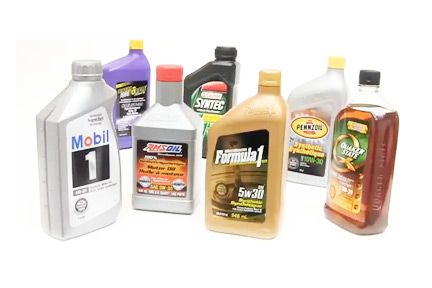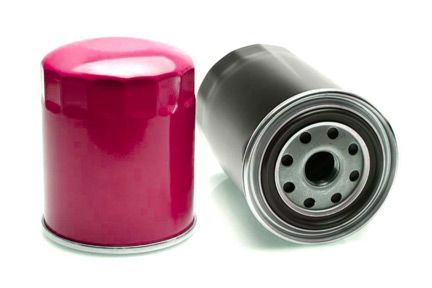When and How to Change Engine Oil in Your Car
Posted Sunday, Jan 29, 2023

Car engine oil is a vital component of your vehicle's overall health and performance. It acts as a lubricant for the moving parts in your engine, helping to reduce friction and heat. It also helps to keep your engine clean by trapping dirt and debris, and it helps to protect against corrosion and wear. Maintaining the oil in your car engine is crucial to ensure your vehicle runs smoothly and efficiently. This can be done by regularly checking the oil level, ensuring that the oil is clean and free of contaminants, and changing the oil at the recommended intervals. It is important to use the right type of oil recommended by the manufacturer for your specific car model and driving conditions. Regular oil changes are necessary to ensure the longevity of your engine, and it is important to seek professional help if you have any doubts or concerns about your car's engine oil and maintenance.
What does engine oil do in a car, Exactly?
Engine oil plays several important roles in a car's engine. Its main function is to lubricate the moving parts of the engine, such as the pistons, crankshaft, and camshaft. The oil reduces friction between these parts, which helps to reduce wear and tear and prolong the life of the engine. Additionally, the oil also helps to dissipate heat generated by the engine, which helps to keep the engine running at a safe temperature.
Another important function of engine oil is to clean the engine. The oil is able to trap dirt and debris that can accumulate in the engine, which helps to keep the engine running smoothly and efficiently. It also helps to protect against corrosion by providing a barrier between the metal parts of the engine and the air and moisture.
Engine oil also plays a role in maintaining the engine's compression and sealing. It helps to prevent leaks and maintain the correct compression in the cylinders.
It is also important to use the right type of oil recommended by the manufacturer for your specific car model and driving conditions. This is to make sure that the oil's properties match the needs of the engine, and it can provide the best protection and performance.
Regular oil changes and proper maintenance of the oil are important, as dirty or old oil can't provide the same level of protection and performance as fresh oil. It is important to follow the manufacturer's recommendations for oil change intervals and to use the correct type of oil for your car.
How Often Should Motor Oil be Changed?

The recommended interval for changing motor oil in a car can vary depending on the make and model of the vehicle, as well as the driving conditions. A good rule of thumb is to change the oil every 3,000 to 5,000 miles, or every 3 to 6 months, whichever comes first. However, it's always best to consult the owner's manual or a professional mechanic for specific recommendations for your car.
It's important to note that certain driving conditions can affect the oil's lifespan, such as:
- Frequently driving in stop-and-go traffic
Extreme heat or cold weather
Dusty or dirty conditions
Towing or hauling heavy loads
High-performance driving
Short trip driving
If you drive frequently in these types of conditions, it may be necessary to change the oil more frequently. Additionally, if you notice any unusual noises or smells coming from your engine, it's a good idea to have it checked out by a mechanic, as this could be an indication that the oil needs to be changed.
To keep your car running smoothly and efficiently, it's important to stay on top of regular oil changes and to follow the manufacturer's recommendations for your specific car model. Changing Your
Changing Your Own Engine Oil
Changing your own engine oil in a car can save you money and give you a sense of accomplishment. However, it's important to have the right tools and knowledge to do it safely and correctly. Here are the basic steps for changing your own engine oil:
Gather the necessary tools and materials: You will need an oil filter wrench, a drain pan, a funnel, a new oil filter, and the appropriate oil for your car's make and model.
Locate the oil pan: The oil pan is typically located under the car near the front of the engine. It's a good idea to consult your car's manual to find the exact location.
Drain the old oil: Position the drain pan under the oil pan, then use the oil filter wrench to remove the drain plug. Be sure to wear gloves and be prepared for the oil to be hot. Be patient and wait until all the oil has drained from the pan.
Replace the oil filter: Locate the oil filter and use the oil filter wrench to remove it. Be sure to clean the filter mount and the surrounding area before installing the new filter.
Refill with new oil: Using the funnel, carefully pour the new oil into the engine, being sure not to overfill. Consult your car's manual for the recommended amount of oil.
Check for leaks: Start the engine and let it run for a few minutes, then check for any leaks around the oil pan and filter.
Recheck the oil level: After the engine has been running for a few minutes, turn it off and check the oil level with the dipstick. Add more oil if necessary.
It's important to note that changing your own engine oil can be messy and requires some mechanical knowledge. If you're not confident in your abilities or if you don't have the right tools, it's best to leave it to a professional mechanic.
It's also important to dispose of the used oil properly, ensure to consult the local regulations in your area, in some places it's illegal to dispose of oil improperly.



